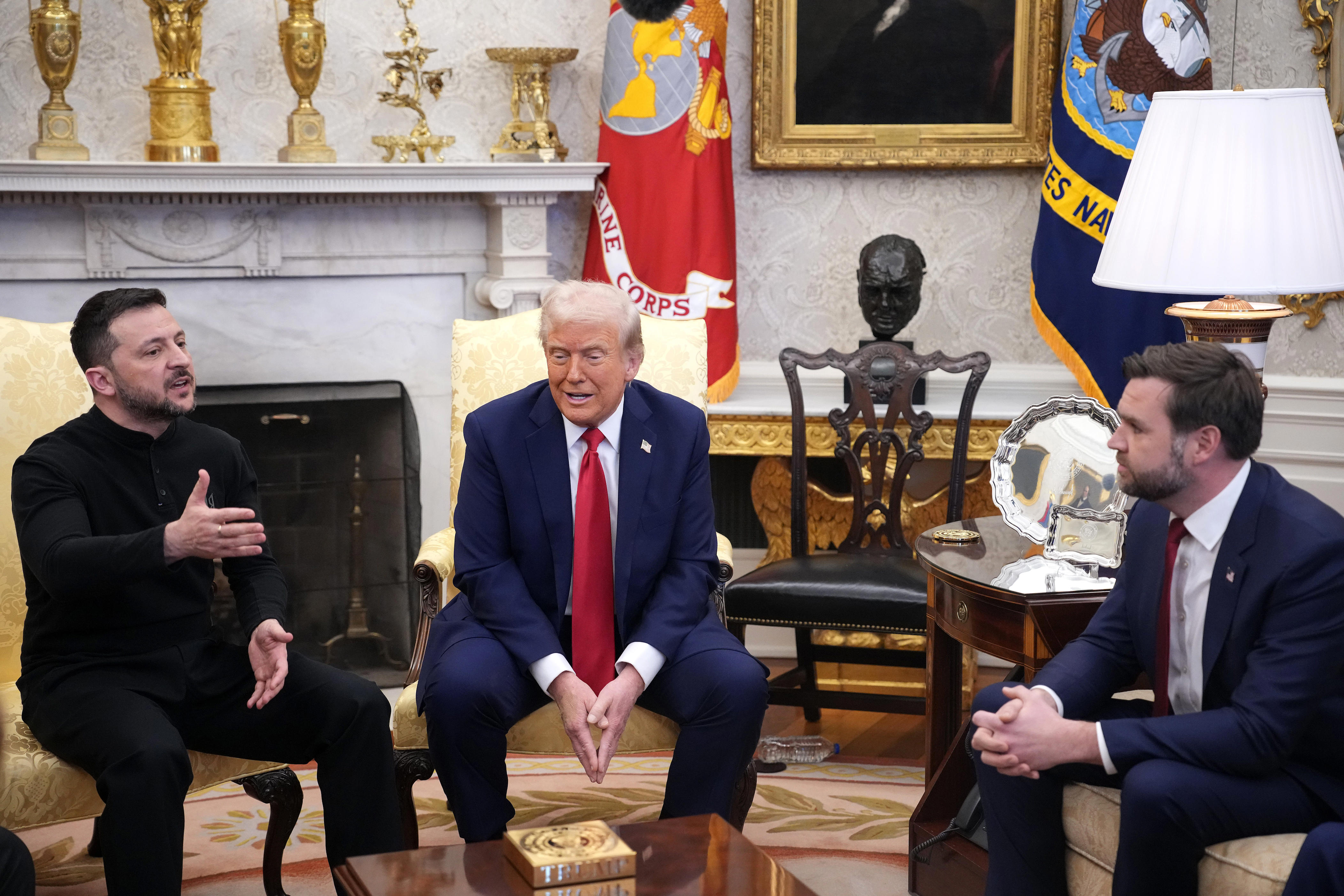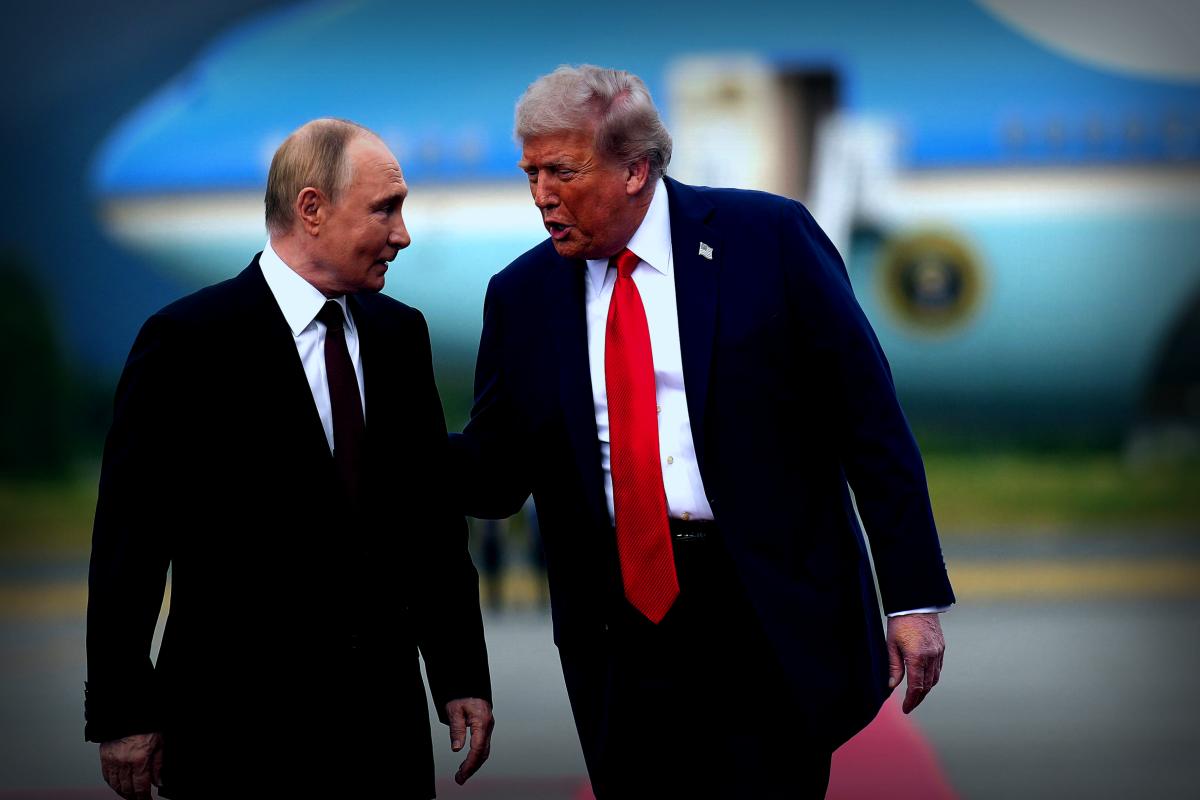President Donald Trump is stirring up a mix of reactions from critics, allies, and the global community by presenting two very different outlooks on how America interacts with friends versus adversaries. This comes after his unsuccessful attempts to secure a ceasefire in Russia’s ongoing war to seize Ukraine.
During a summit held in Alaska, Russian President Vladimir Putin was given an extravagant welcome, complete with a stunning flyover by a B-2 bomber and a ride in Trump’s iconic presidential limousine known as “The Beast.” There were even moments caught on camera showing the two leaders sharing a laugh together.
In a display of mutual admiration, Putin claimed that had Trump been in office in 2022, the war wouldn’t have kicked off.
Stay informed. Get a daily news roundup delivered right to your inbox.
Andrei Gurulyov, a retired general and member of Russia’s parliament, hailed the occasion as a significant “breakthrough,” which was prominently showcased in Russian media. Putin’s foreign ministry suggested that this momenting represents an end to the perceived isolation of the country on the global stage.
However, this red-carpet spectacle sharply contrasts a heated exchange Trump had with Ukrainian President Volodymyr Zelenskyy earlier in the year. That day, in the Oval Office, Trump and his top officials accused Zelenskyy of showing disrespect to the United States, stirring concerns over the potential for a global conflict.
During the meeting, Zelenskyy faced ridicule from Trump regarding his clothing, ultimately culminating in his abrupt departure from the White House.
Some Republican figures, like Senator Lindsey Graham from South Carolina, even suggested that Ukraine’s president should consider stepping aside from his role or changing his approach if he hopes for cooperation with the U.S.
Following that contentious encounter, the administration halted intelligence sharing and weapon supplies to Ukraine. Although Trump had previously threatened Russia with serious economic sanctions for not reaching an agreement to stop the conflict, those threats evaporated after his sit-down with Putin in Alaska.
Now, Trump is prepared to invite Zelenskyy back to Washington on August 18, aiming to discuss a possible peace settlement.
Reactions to Trump’s Diplomacy: Republican Approval vs. Democratic Skepticism
The administration, supported by its Congress allies, framed this meeting as a crucial moment for hopefully ending a conflict that has persisted for over three years, putting Trump’s negotiating prowess to the test.
In an August 15 post on X, the White House declared, “Our ultimate aim is peace.”
Republican Senator Tom Cotton from Arkansas tweeted on August 16 that Trump “remained steadfast in protecting U.S. interests,” describing the summit as an important preliminary stride towards a “lasting peace that secures Ukraine’s sovereignty.”
Conversely, many Democrats and critics argue that this summit indeed favored Putin, who is currently facing international war crime allegations, and they question the merits of the meeting. Senate Minority Leader Chuck Schumer commented ahead of the meeting, expressing concerns that it might ultimately be theatrical instead of meaningful diplomacy.
Reevaluating Strategies for Peace Amid European Concerns
After Trump’s return to Washington on August 16, he came equipped with kind remarks from Putin but lacked any new agreements. Open discussions around a ceasefire appear to have been overlooked, focusing instead on realigning U.S. ties with Zelenskyy, who is scheduled for an Oval Office meeting upon his return.

Trump began distancing himself from Putin and shifting towards Zelenskyy shortly after Moscow escalated the bombardment of Kyiv back in April. Reports hint that land swaps could be on the table, involving Ukrainian areas currently beyond Russian control, a move previously disapproved of by U.S. allies according to a New York Times article.
In a recent post on X, Zelenskyy confirmed discussions with Trump and European leaders while reiterating that an end to hostilities is essential and that peace discussions should only happen following a cessation of fighting.
He stressed, “Our positions should be crystal clear—I aim for a real peace that endures, rather than merely pausing the cycle of Russian aggression.”
European leaders chimed in supporting a meeting between Putin and Zelenskyy, with French President Emmanuel Macron prominently warning about Russia’s inconsistency in honoring peace treaties in the past months.
Senator Tammy Duckworth from Illinois expressed her discontent on X, stating that Trump’s meeting with Putin on American soil, without any Ukrainian officials, was distasteful. She underscored that it’s apparent Putin is not engaging sincerely in the peace process.
This article initially appeared on USA TODAY: Trump’s Differing Approaches to Putin and Zelenskyy





















